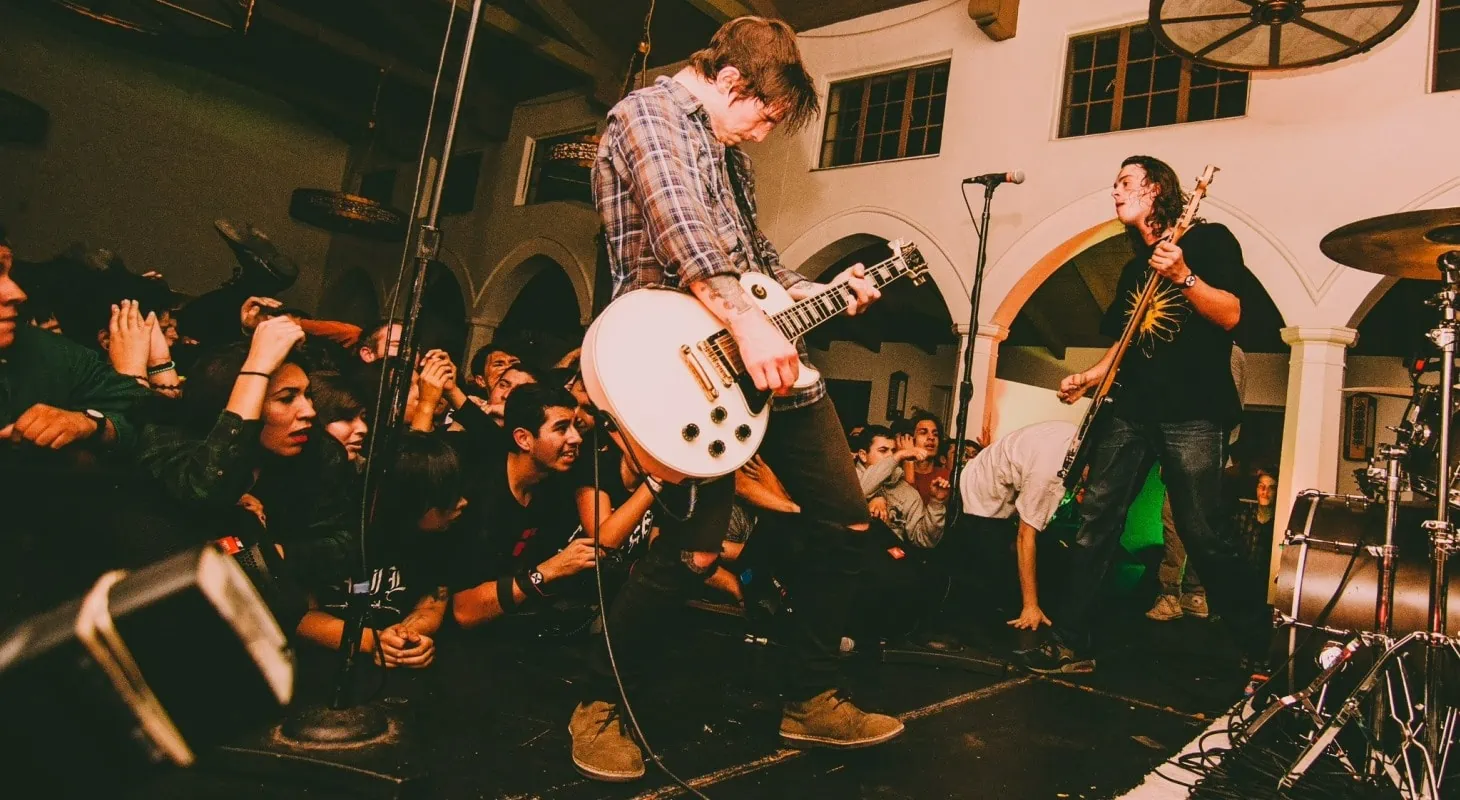Starting out as one of the standout acts from the Pennsylvania hardcore scene, Title Fight remained staples of tours, festivals, and social media until their unofficial hiatus in 2018.
Their music began as classic hardcore, with tight, powerful riffs and tones. Although the band has dabbled in other styles, the group still refers to itself as hardcore punk.
Unlike many other hardcore bands, Title Fight consistently boasted stellar guitar tones, with plenty of definition and grit to their sound, particularly on their debut album, Shed.
In this article, I’ll go over the key pieces of gear Title Fight used to create the distinctive sound of Shed.
Table of Contents
Title Fight Guitars
Title Fight’s two guitar players, Jamie Rhoden and Shane Moran, embraced a practical, back-to-basics approach to gear. Neither appears partial to custom instruments or elaborate setups, preferring a more punk-friendly approach with a simple, high-quality guitar.
Jamie Rhoden’s main guitar for most of Title Fight’s career was a white Gibson Les Paul Custom. Before buying the Les Paul Custom, Rhoden wielded a Gibson SG Standard. Although later material, such as that on Floral Green, featured some single-coil tones from Rhoden, recorded with a Stratocaster, the classic Jamie Rhoden sound, to me, is a humbucker-equipped guitar.
For guitar players without the budget for a genuine Gibson Les Paul Custom, I’d recommend the excellent Epiphone Les Paul Custom, which comes in the matching white color to match Jamie Rhoden’s.
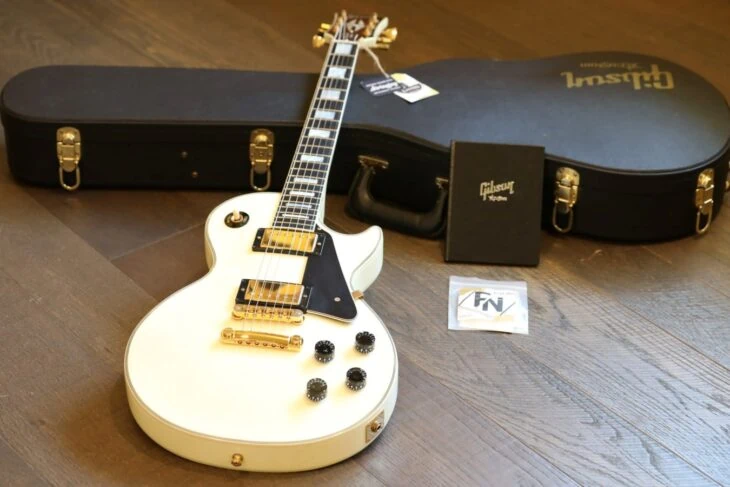
If you’re interested in an alternative to the Gibson family of brands, I’d recommend the ESP LTD Eclipse, which is, for all intents and purposes, a Les Paul copy. Its stock humbuckers are a little hotter and more clearly defined than the Epiphone’s, so it might be better suited to Title Fight’s music than the Epiphone Les Paul.
Shane Moran, too, played Les Pauls but drifted towards burst and gold top iterations in Title Fight’s late career. He played various Les Pauls extensively from around 2012 onwards, but I wouldn’t consider the thick, powerful sound of a Les Paul to be his signature tone. Instead, I associate his playing with the distinctive tone of the Fender Jaguar.
Moran actually alternated between a twin-humbucker-equipped Jaguar and a Kurt Cobain signature model, a Mustang with a single humbucker in the bridge position.
One of the best value-for-money humbucker Jaguars on the market is the Vintera model, with twin Fender humbuckers. Another option, at a lower price point, would be the Squier Contemporary Jaguar.
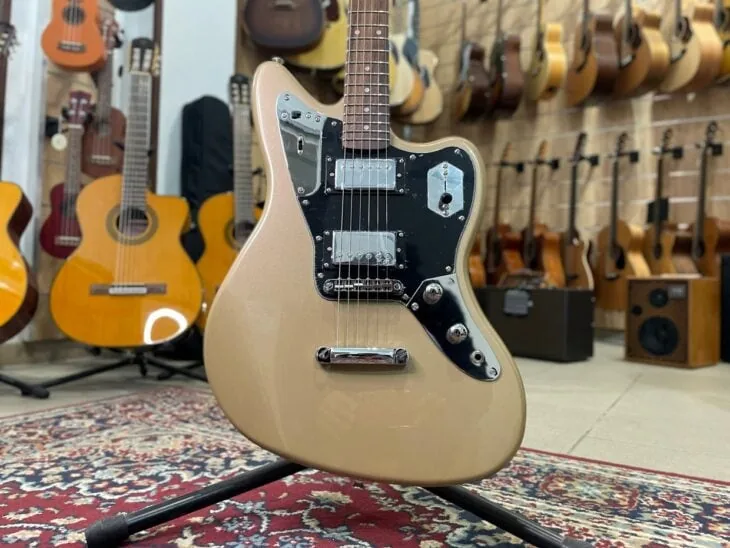
You could also channel Shane Moran’s love of Nirvana with a Cobain signature model Fiesta Red Mustang. This was one of Moran’s primary live guitars for most of the 2000s, and he used it extensively on tour throughout the band’s early phase.
Title Fight Amps
Title Fight’s tone is thick, aggressive, and powerful. They tended to rely on tight, natural-sounding amp saturation for their base tone, and then used pedals to sculpt that sound where necessary.
The band used Marshall JCM800s for most of their work up until Floral Green and made particular departures into cleaner textures around the time of Hyperview. However, the classic Shed-era Title Fight sound, to my ear, is a British-style tube amp.
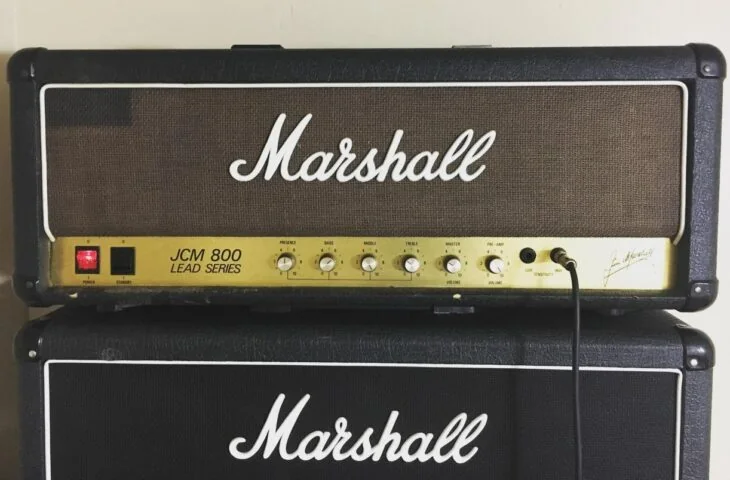
For many guitarists, including myself, a full-power 100-watt Marshall is simply too loud and unwieldy for regular practice and performance. However, Marshall has invested heavily in making affordable combo-amp versions of their classic amplifiers in recent years.
For the Title Fight sound, the Marshall Studio Classic is probably the best choice. It’s effectively a JCM800 in a smaller box with a 10-inch speaker. At a lower price point, the EVH 5150 10-inch combo is another excellent Marshall-style amp. The main difference between the two is the EVH amp’s more even volume taper and EQ response.

Either of these would be great for playing Title Fight’s music.
Title Fight Amp Settings
Key to nailing the Title Fight sound is understanding the specific amp settings they used to achieve their chosen tones.
These settings are based on the sounds from Shed but can be easily applied to Floral Green. For Hyperview material, reduce your gain.
Volume: 6-7
You’ll want your power amp running into natural drive for this sound, so turn up into your amp’s “sweet spot” around 6-7.
Gain: 8
Turn up the gain for this dense, distorted sound. For playing material from Hyperview, turn this down to about 4 or 5.
Bass: 7
This is a warm, thick sound, so turn up your bass knob. You might be surprised to hear how well the characteristic “peaking” sound of Title Fight’s tone comes through with more low end.
Mids: 3
This isn’t a mid-heavy rock sound, so we’re scooping the mids back.
Treble: 5-6
Tame your treble. Keep the sound warm, with just enough treble to sound “present.”
Presence: 5-6
You don’t want this sound to be too in-your-face, so keep your presence knob about halfway up. Just enough for some frequencies to shine through, but not every possible overtone.
Title Fight Pedals
The key pedals you’ll need for the Title Fight guitar sound are a fuzz, chorus, and a reverb. Both Jamie Rhoden and Shane Moran are very partial to chorus as an always-on effect, although they only started using chorus heavily around Floral Green.
The classic Title Fight distorted tone is boosted and supported by their use of the classic EHX Russian Big Muff. This distinctive green pedal has a characteristic warm, almost grungy sound that is rarely found in other fuzz pedals.
I’d recommend the Russian Big Muff as the main source of dirt in your signal chain for the Title Fight tone.
For reverb, both Moran and Rhoden used the EHX Holy Grail, typically at the “hall” setting rather than the noisier, “drippier” spring reverb setting.
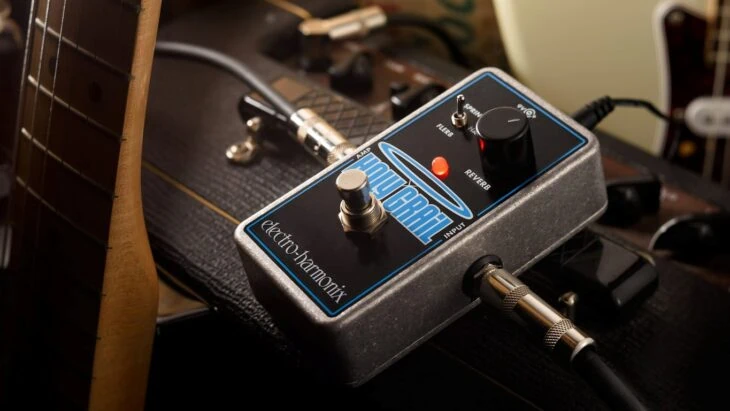
For their material from Floral Green onwards, Title Fight embraced lush, atmospheric chorus sounds. Both Moran and Rhoden embraced Boss Chorus Ensemble pedals.
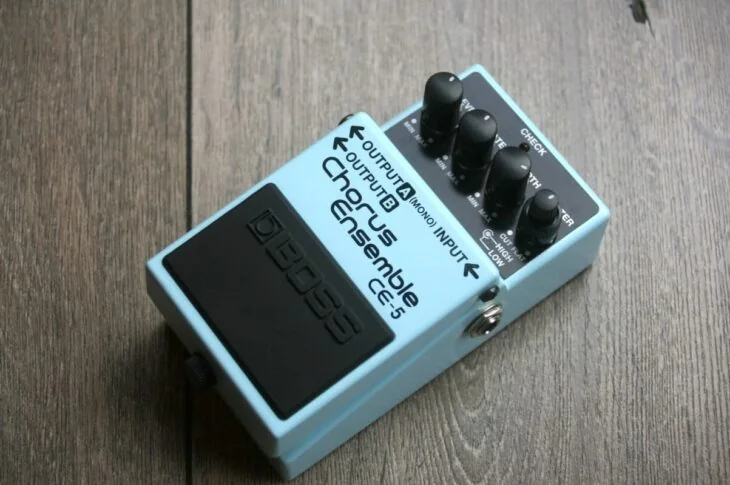
When you set up your signal chain, I advise running your fuzz into the chorus pedal, then the chorus into the reverb. This way, you don’t end up with a sound that is too muddy or undefined, and you won’t have squealing feedback from a reverberating fuzz tone.
Final Word
Title Fight’s guitar sounds are tight, punchy, and perfect for starting a mosh pit. With the right combination of guitar, amp, and pedals, you can nail the Title Fight sound, covering their early post-hardcore work all the way up to their later shoegaze-indie leaning material.

